Championship Debrief: What it takes to win
Published on September 29th, 2015
St. Francis Yacht Club’s Rolex Big Boat Series on September 17-20 served as the J/105 North American Championship, which attracted 27 boats to compete on San Francisco Bay. This report from Quantum Sails came from their customer debrief on the format, the competition, and what it took to win….
Phillip Laby, Godot, 6th Place — On Getting Good Starts
There were a lot of good sailors in the fleet, so I expected it to be tougher competition than usual. I figured we’d go out and do as best as we can. Our goal was the top three, we ended up sixth, partially because there is more talent out there, and partially because we didn’t execute our starts, we didn’t get good starts on the first day. So we were playing catch up for the rest of the race, but we kept ourselves in the game.
The key to doing well in this regatta was getting good starts that set you up for going in the right direction on the first leg, and knowing where you were going. They’re all bay tours; it’s a big picture thing. In the beginning my idea was that it was more important to get a start that sent you in the right direction. I changed my philosophy after a while, and looked for a good spot on the start line focusing on an open lane rather than being closer to the side that I wanted to go.
Ryan Simmons, Blackhawk, 5th Place — On Preparation
The goal going in was to win. We thought we had a really good opportunity, a fast boat, a great crew, new sails, and we totally thought we could win the regatta. It didn’t work out that way but that was the goal.
We put a lot of time and pride into our preparation going into the race. We’ve been sailing together for two years, working on different maneuvers and different settings for the boat, so that when we got into these situations with variable conditions and long legs, we could adjust to them, but once you’re out on the water sailboat racing is sailboat racing.
The finish of the first race was without a doubt the apex of the regatta for us. We crossed the line overlapped with Donkey Jack—it couldn’t have been more than five feet. To win that race was pretty exciting.
Jason Woodley, Risk, 3rd Place — On Consistency
A top-five finish was what we were trying to accomplish. We felt with the level of competition—there were 10 boats that could have won. There were a couple boats that are respected in their own fleets. In San Francisco, we have a little bit of an advantage being local.
We wanted to take it one race at a time, try and get into the top five for each race; that was our focus. We knew it was going to be a light year and we’re actually a heavy-wind boat; we like to have bigger air, so we really tried to keep the sails powered up, that was our real focus with our Quantum sails.
Jeff Littfin, Mojo, 2nd Place — On Climbing Back
The plan was to sail conservative. We felt like we had the boat speed as long as we minimized mistakes. We actually had poor starts and were able to dig back through the fleet. That was probably the most impressive thing of the regatta—to be in a deep position and end up with a top-five finish. We put ourselves in tough spots off the line and were able to dig back.
It was disappointing that missed two races. Once the wind came in it was a pretty awesome Big Boat Series. It wasn’t too windy; it was probably one of the best weather-wise. The tides played a part, but they weren’t mammoth tides. It was spectacular. It was probably best Big Boat Series I’ve been to, conditions-wise.
Shawn Bennett, Jose Cuervo, 2015 J/105 North American Champion — On the Challenge
What’s nice about Big Boat Series, is that there’s a different course every time for a new challenge, but for a North Americans, that’s a little different because you’re used to having your own racecourse.
We found it enjoyable actually with all the different features, colliding with the other fleets, but it certainly adds a layer of difficulty—free and clear and ahead doesn’t mean some other fleet isn’t going to come along and pin you out, force you in another direction, or even cut in on your air or roll you. You’re not only managing your own fleet, in terms of covering them if you’re ahead, you’re also trying to manage the lay line and traffic management.
There were a couple sheer terror moments, like when we were going upwind on starboard and we were doing a back-and-forth trying to get around Kialoa III, the 78-foot maxi. We thought, if that thing hits us, we’re done.


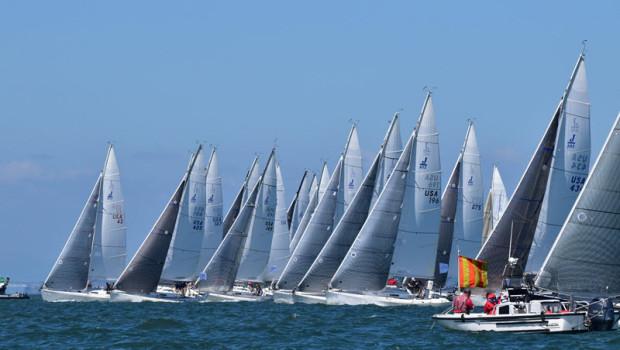


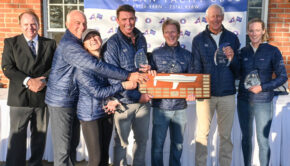
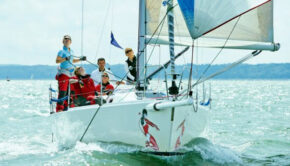
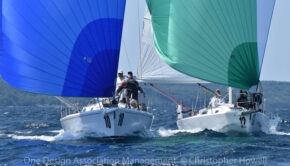
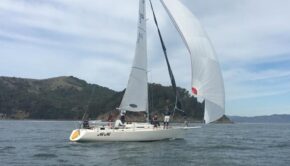
 We’ll keep your information safe.
We’ll keep your information safe.